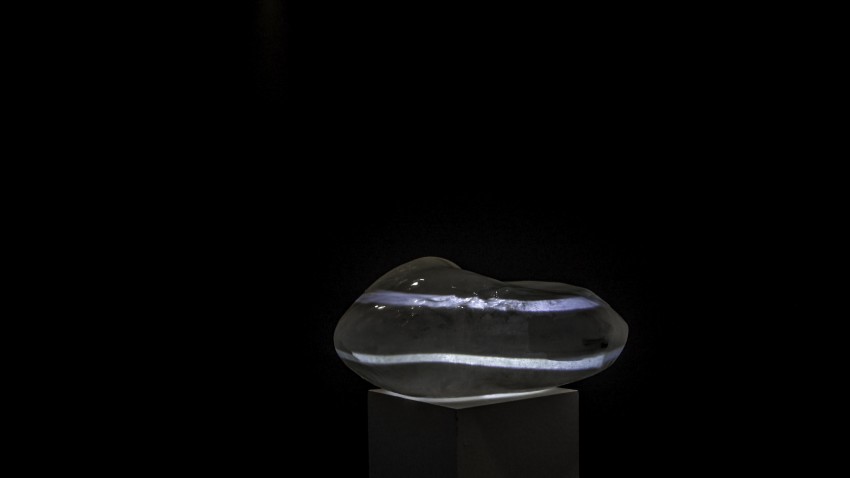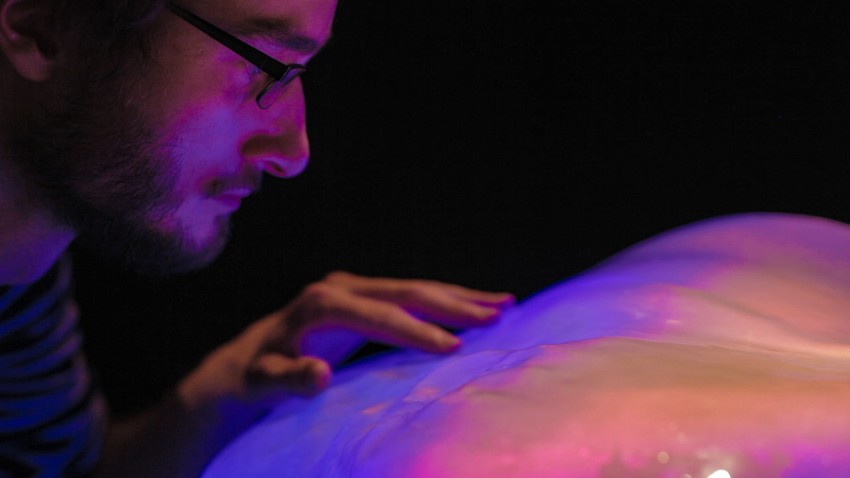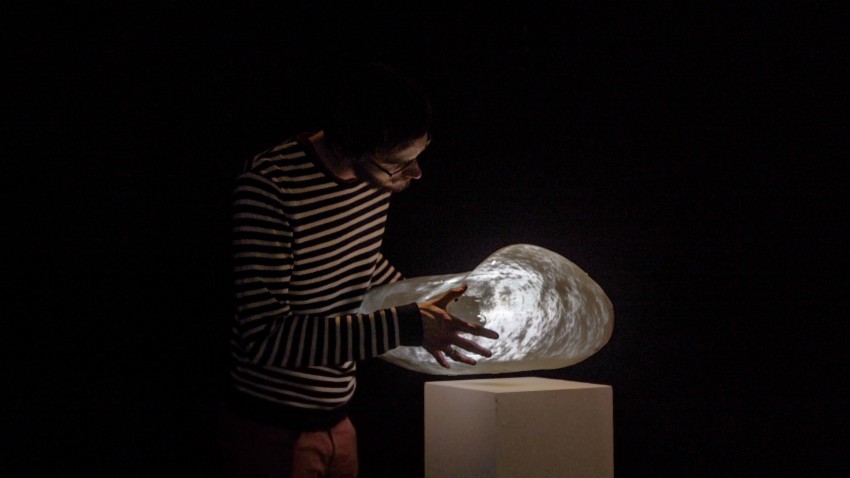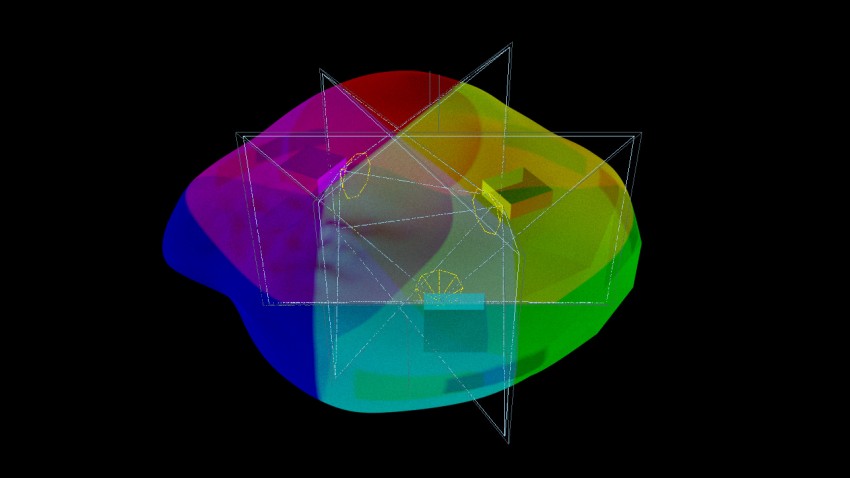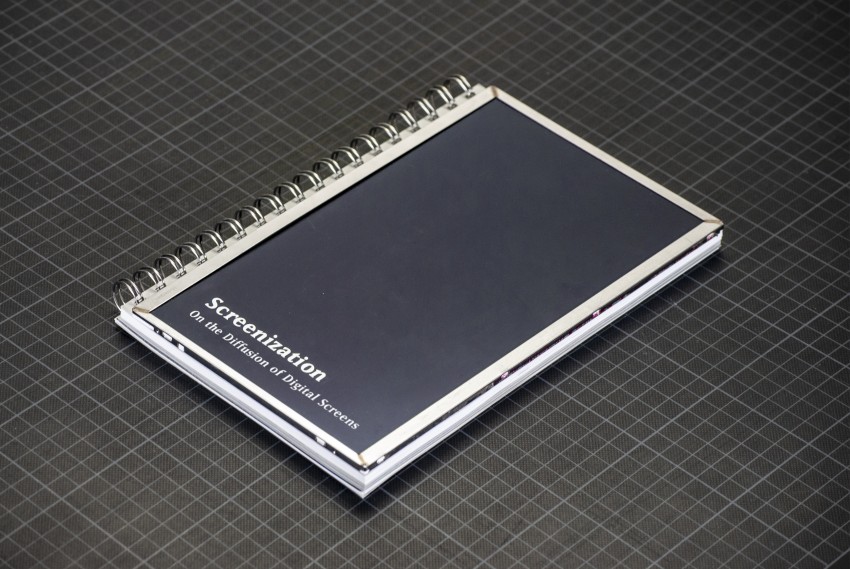Screenization Experiment - Materiality
credits Lorenz Potthast
A sculptural object consisting purely of a material with screenic properties.
MORE INFORMATION: http://www.lorenzpotthast.de/screenization/
What if screens could be shaped into any form? What would happen to our expectations of forms and materiality, if all surfaces contained screenic properties?
Following the tendency of screens for self-effacement, the materiality and surface condition of the object step back in favor of its content: The appearance of the sculpture is defined purely by its screenic materiality. As a mock-up of a screenitized object, the sculpture simulates the behavior of screenic properties outside a flat rectangle. Regardless the technologies used, the sculpture questions our understanding of shape, material and surface in a world where screens are increasingly dominating our visual perception.
A screenic sculpture was built, that consists of a thin mold of semi-transparent plastic, cast from epoxy resin. The form of the object is deliberately designed as a “non-shape”, not representing any known form and also the materiality of the plastic is strangely unfamiliar. In the inside three mini-projectors are mounted with a custom-built short-throw lens system. A specific projection setup creates a seamless coverage that fills the whole object from the inside. The projectors are battery driven and wireless connected, and therefore allow for the sculpture to be moved around in space freely without limitations or shadowing. The images shown on the surface can reach from abstract shapes to concrete depictions and are controlled by a VVVV patch on an external computer. A modification of the VLC player is used to send the video data to the three Android projectors synchroniously. This parallel existing digital version of the object is used to merge virtually simulated properties with the physical appearance of the object in real-time. Using different sensors for tilting or touch recognition, the object can behave according to its context and be interacted with.
This project is part of Lorenz Potthast’s Master Thesis “Screenization - On the Diffusion of Digital Screens” in the Digital Media program at the University of Arts Bremen. It combines a detailed examination of the historic development of screens and theoretical thoughts about the essence of screenic properties with two experimental infrastructures to make speculations about screens of the future tangible. Furthermore it is embedded in the ongoing research on experimental screens with his collective for audio-visual art Xenorama.
By Lorenz Potthast
Music: Solar Nexus (Tim Heinze & Richard Oeckel)
Thanks to: Mulu, Felix, Raymond, Jonas, Frieder, Dennis, Moritz, Richard, Marcel, Tim, Lukas, Chang, Özgür, Max, Lulu and all the Digital Media Studio inhabitants and the Master-T group, Bettina, Asli, Roland, Ernie and many others.
- 1
anonymous user login
Shoutbox
~4d ago
~10d ago
~10d ago
~11d ago
~24d ago
~1mth ago
~1mth ago
~1mth ago
~1mth ago
~2mth ago

